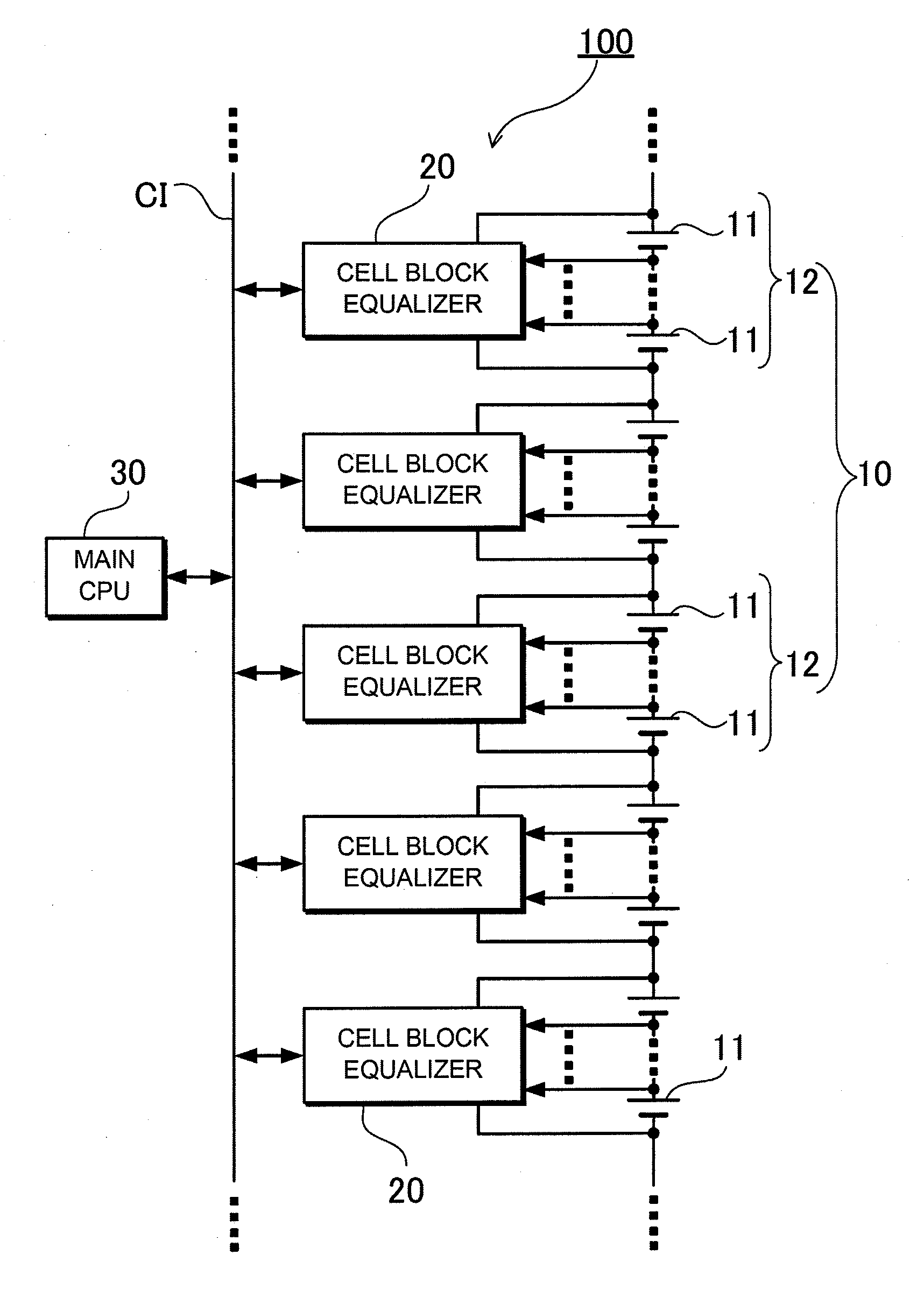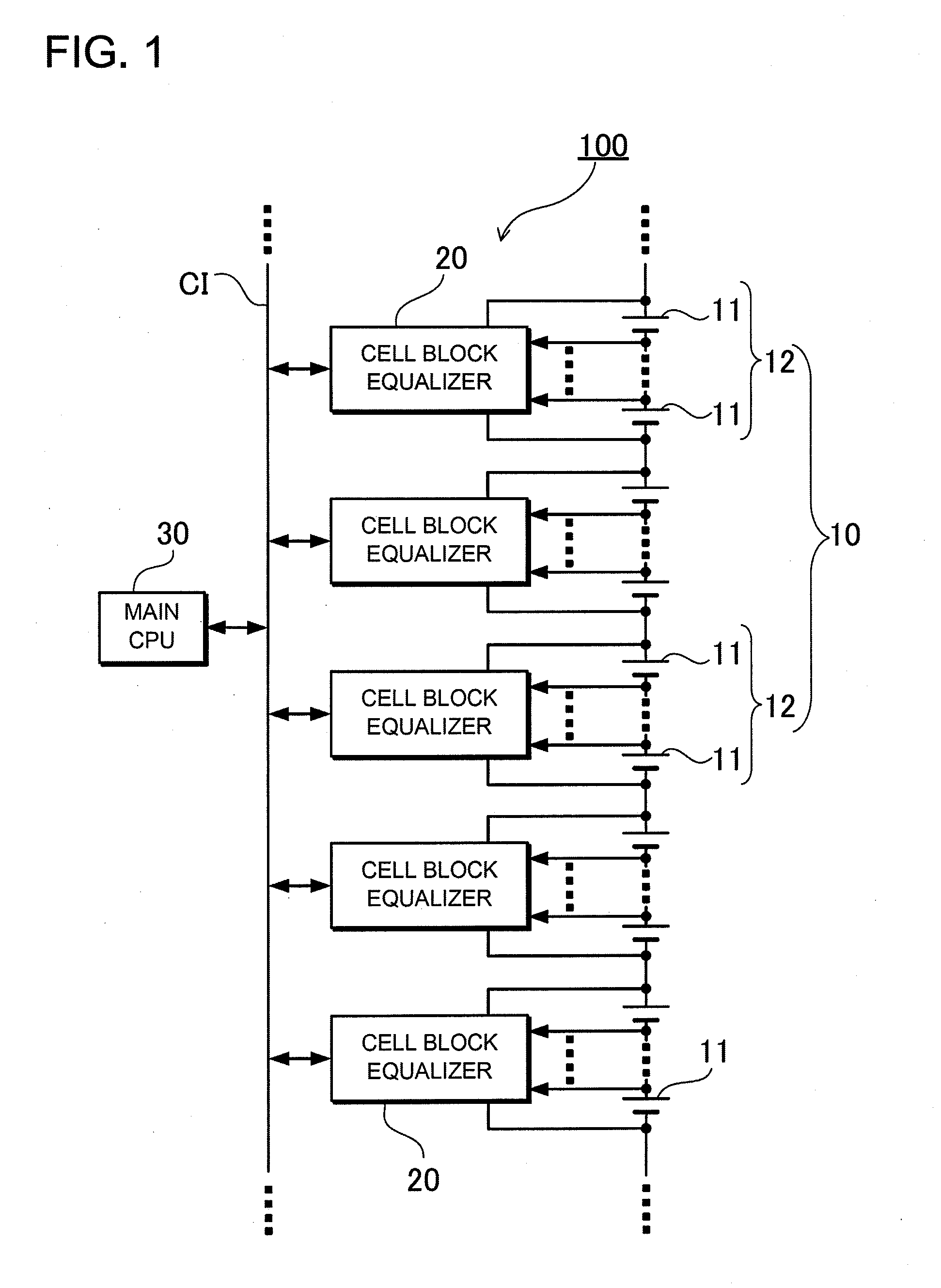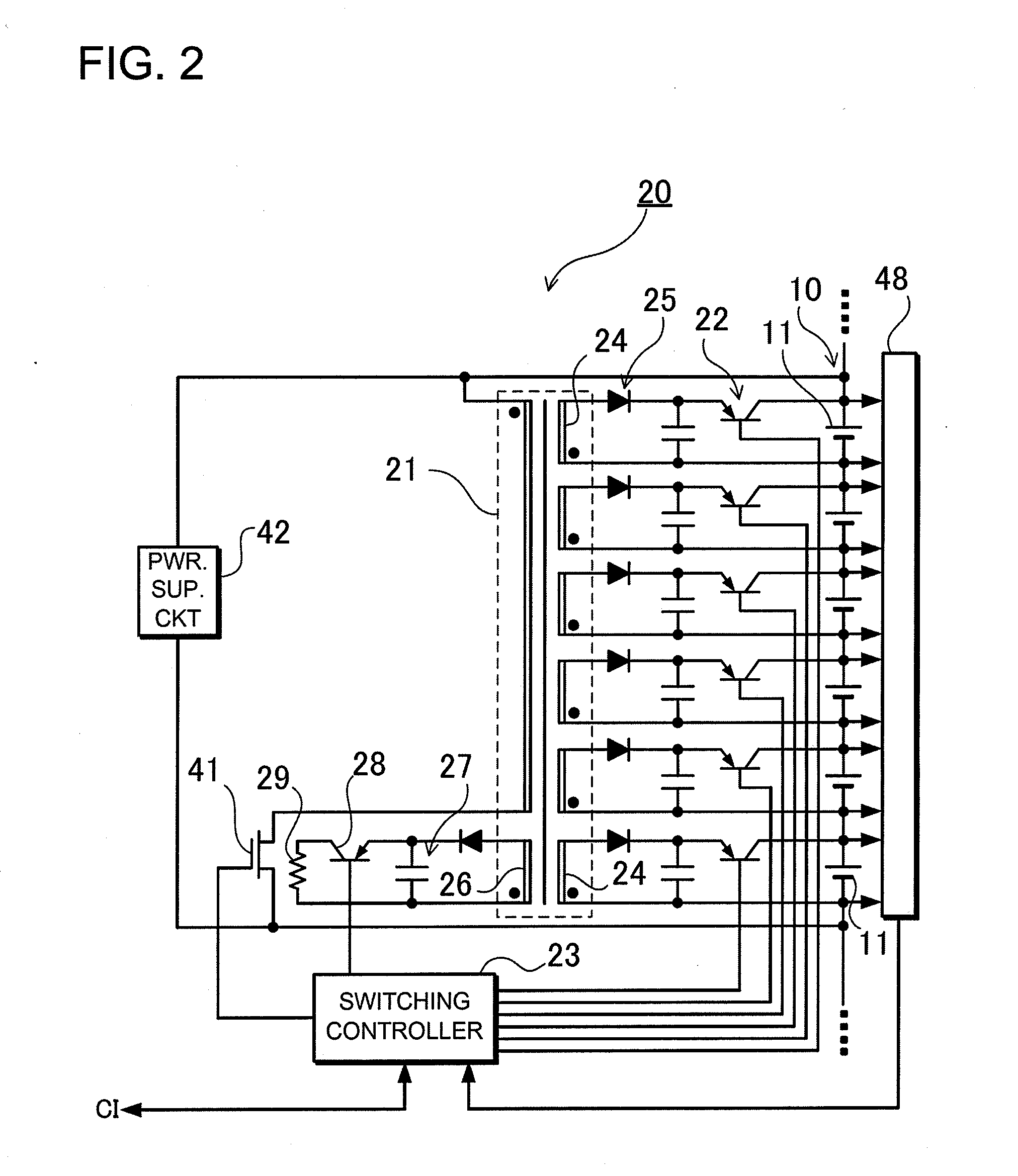Power supply device capable of equalizing electrical properties of batteries
a power supply device and battery technology, applied in the direction of battery/fuel cell control arrangement, electrochemical generators, transportation and packaging, etc., can solve the problems of battery with completely the same properties not being manufactured, uneven voltage and remaining capacity, and particular batteries may be over-charged or over-charged, so as to reduce the amount of capacity to be discharged, the effect of keeping the balance among the batteries
- Summary
- Abstract
- Description
- Claims
- Application Information
AI Technical Summary
Benefits of technology
Problems solved by technology
Method used
Image
Examples
first embodiment
[0029]FIG. 1 is a block diagram showing the construction of a power supply device 100 according to a first embodiment of the present invention. As shown in this block diagram, the power supply device 100 includes a series battery group 10 that includes a number of batteries 11 that are serially connected to each other. The series battery group 10 is divided into a plurality of blocks. Each of the blocks composes a cell block 12 that includes a predetermined number of batteries 11 that are serially connected to each other. Each of the cell blocks 12 is connected to corresponding one of cell block equalizing circuits 20 that suppresses the property variation among the batteries that are included in the cell block 12. A main CPU 30 controls the cell block equalizing circuits 20 for equalization where the property variation among the cell blocks is suppressed. The main CPU 30 is connected to and can communicate with the cell block equalizing circuits 20 through a communication interface...
second embodiment
[0051]The embodiment shown in FIG. 2 has been described in that the power supply circuit 42 reduces the block voltage, which is the total voltage of the series battery group 10, by using the DC / DC converter or the like, and supplies electric power for driving members such as the switching control circuits 23. However, in this construction, if the difference is large between the block voltage and electric power for driving a microcomputer that composes the member, the voltage conversion loss will be large. For this reason, it is preferable that voltage be provided from the discharging secondary winding line 26 as discussed above so that the voltage is used as the power supply voltage for driving the microcomputer. The reason is that electric power to be consumed in discharging equalization can be effectively used. FIG. 5 shows an exemplary diagram of this type of circuit according to a second embodiment. A cell block equalizing circuit 20B of this illustrated power supply device has ...
third embodiment
Additional Battery Charging Function
[0054]The electric power produced in the equalization can be used to charge the additional battery. FIGS. 6 and 7 show exemplary diagrams of this type of circuit according to a third embodiment. FIG. 6 is a block diagram of a power supply device 300 with an additional battery 50 connected to the power supply device 300. FIG. 7 shows an exemplary circuit of cell block equalizing circuit 20C shown in FIG. 6. In the case of vehicle use, for example, the illustrated additional battery 50 can be a 12-V lead battery for vehicle electrical components, while the series battery group 10 can be a battery for driving the vehicle. In the power supply device 300 shown in the block diagram of FIG. 6, in addition to the communication interface CI, which connects the cell block equalizing circuits to the main CPU 30 as shown in FIG. 1, an additional battery connecting interface BI is provided for charging the additional battery 50. Thus, the cell block equalizing...
PUM
 Login to View More
Login to View More Abstract
Description
Claims
Application Information
 Login to View More
Login to View More - R&D
- Intellectual Property
- Life Sciences
- Materials
- Tech Scout
- Unparalleled Data Quality
- Higher Quality Content
- 60% Fewer Hallucinations
Browse by: Latest US Patents, China's latest patents, Technical Efficacy Thesaurus, Application Domain, Technology Topic, Popular Technical Reports.
© 2025 PatSnap. All rights reserved.Legal|Privacy policy|Modern Slavery Act Transparency Statement|Sitemap|About US| Contact US: help@patsnap.com



